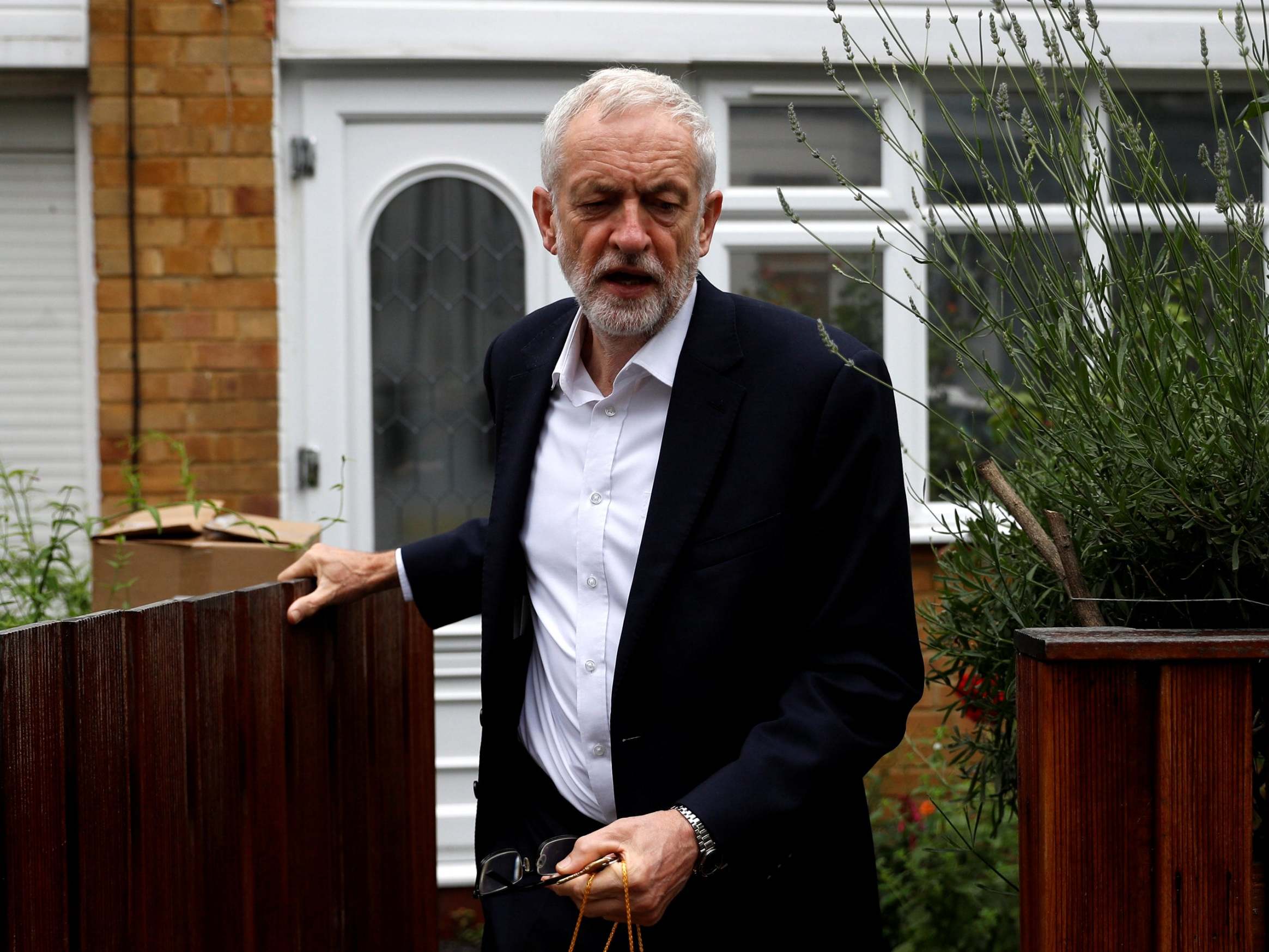What would Labour have to do to remove Jeremy Corbyn as leader?
Politics Explained: The looming prospect of an early election is focusing minds across the political divide

MPs have headed off for the summer holidays but despite the sunshine, clouds are looming for Jeremy Corbyn.
Over the weekend, a new poll found that Labour would have a clear lead over Boris Johnson if Mr Corbyn was replaced at the top of the party.
The Deltapoll survey for The Mail on Sunday placed the Tories on 30 per cent, with Labour on 25 per cent, and the Liberal Democrats on 18 per cent. Nigel Farage’s Brexit Party was losing ground on 14 per cent.
But the poll found that Labour would soar into the lead on 34 per cent if Mr Corbyn was dropped as leader, with the Tories on 28 per cent, and the Liberal Democrats on 13 per cent.
Mr Corbyn has been on the defensive of late amid a torrent of criticism over Labour’s handling of antisemitism complaints and recriminations over the party’s poor performance in the European parliament elections.
He also faced open calls to stand down, with the latest from Lord Mandelson, a long-time critic of Mr Corbyn, who told the party to ditch him in favour of a leader who can “stand up to Boris Johnson”.
But how could the party replace Mr Corbyn, if it wanted to?
Under Labour rules, a leadership contest is triggered if a challenger can secure the backing of 20 per cent of MPs and MEPs.
There are currently 247 Labour MPs and 10 Labour MEPs, so a challenger would need 49 or 50 MPs to support them.
A would-be leader would then have to notify Labour’s general secretary of the challenge.
The incumbent leader does not need to secure nominations to be on the ballot paper, according to the latest Labour Party rulebook.
Ballots are cast by members and supporters, with the result announced at annual conference if the party is in opposition. The process can be sped up if Labour is in government.
Another tactic would be either a no-confidence vote or mass resignations from the Labour front bench, in order to ramp up the pressure on the Labour leader to quit.
In reality, would-be challengers will be well aware that Mr Corbyn has survived all such attempts during nearly four years at the helm.
He endured a string of resignations in 2016 triggered by the sacking of Hilary Benn, who now chairs the Commons Brexit committee.
Mr Corbyn lost a confidence vote the same year but he refused to stand down, as he said the ballot did not have “constitutional legitimacy” against an elected leader.
The Labour leader then saw off a challenge from Owen Smith in 2016 and increased his mandate, cementing his position further.
Mr Corbyn insists he is “not worried” about taking on Mr Johnson and Labour is ready to fight the new Tory leader at the polls.
He will also reassured by a recent YouGov survey that found more than half of Labour members (56 per cent) said he should lead the party into the next election.
But as Mr Johnson steers his party towards a no-deal Brexit, while the Liberal Democrats enjoy a resurgence under new leader Jo Swinson, Mr Corbyn, the great survivor, may find the ground shifting.
Subscribe to Independent Premium to bookmark this article
Want to bookmark your favourite articles and stories to read or reference later? Start your Independent Premium subscription today.
Join our commenting forum
Join thought-provoking conversations, follow other Independent readers and see their replies
Comments